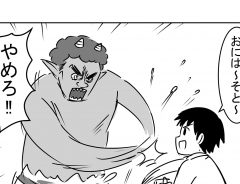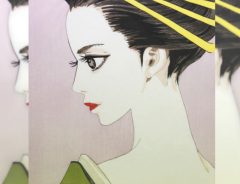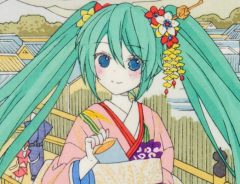
Source: Toshihiko Isao in his atelier with some of his own and other favorite works of art. (2021) | © JAPAN Forward
[A Visit to the Atelier] Epidemics and Talismans in Ukiyo-e
- Tags:
- epidemic / Japanese painting / pandemic / talisman / Ukiyo-e
Related Article
-

You know it’s a pandemic when the demons give this excuse at Setsubun [manga]
-

JIBUN HAUS redesigns family houses with the pandemic and remote work in mind
-

Nikawa exhibit showcases timeworn handicraft that binds the ancient paintings of Japan
-

Japanese waitlist system “MyTurn” keeps social distance; subsidy for businesses now available
-

Fans Can Now Purchase Moyoco Anno’s Artwork Reproduced As Ukiyo-e Paintings
-

Hatsune Miku Reimagined As Edo Kimono Girl In Traditional Ukiyo-e Painting


Artist and ukiyo-e collector Toshihiko Isao shares insights into the folk beliefs and art forms that ordinary people turned to as they battled epidemics in past centuries.
Toshihiko Isao, for JAPAN Forward
This is my first opportunity to greet all my readers in this Year of the Tiger! I look forward to writing articles for you again this year.
Last year was a very hectic year for me, as I received the International Ukiyo-e Society Award and had to give a commemorative lecture, which was completely unfamiliar terrain for me. With the help of my daughter I managed to complete this difficult task and was very relieved afterwards.
I thought about what kind of theme would be of interest to my readers and realized that the coronavirus pandemic that has been troubling us for so long must have become one of the most familiar themes for us by now.
During the Edo period (1603–1868), there were major epidemics of smallpox and other diseases in Japan. Our ancestors fought hard against these uninvited guests and eventually managed to overcome them.
In a time when epidemics were not as clearly understood from a medical perspective as they are today, ordinary people turned to folk beliefs for help. The hōsō-e I am about to introduce are an example of such beliefs. People believed that if they would paste these pictures on their walls or sliding doors, or keep them under their pillows as a talisman, the evil spirits causing smallpox would run off and vanish.
While hoping that the coronavirus we are still facing today will be brought under control soon, let’s have a look at some simple and pleasant hōsō-e from my collection.
Utagawa Yoshitora and the Horned Owl.
Utagawa Yoshitora, Horned Owl. | Courtesy of © JAPAN Forward
Hōsō-e were usually printed in the color red, which was believed to ward off evil. They depict brave warriors, the powerful folk hero Kintarō, small birds flying freely through the air, and other animals, all of which express parents’ wishes for their children to grow up healthy and become smart kids.
The Horned Owl I am introducing here is known as the sage of the forest, and was probably depicted in the hope that the child who kept it would grow up healthy and become an intelligent human being. The character for “longevity” on the stomach of the horned owl is probably depicted to make it a celebratory image as well.
(...)
Written by Japan ForwardThe continuation of this article can be read on the "Japan Forward" site.
[A Visit to the Atelier] Epidemics and Talismans in Ukiyo-e